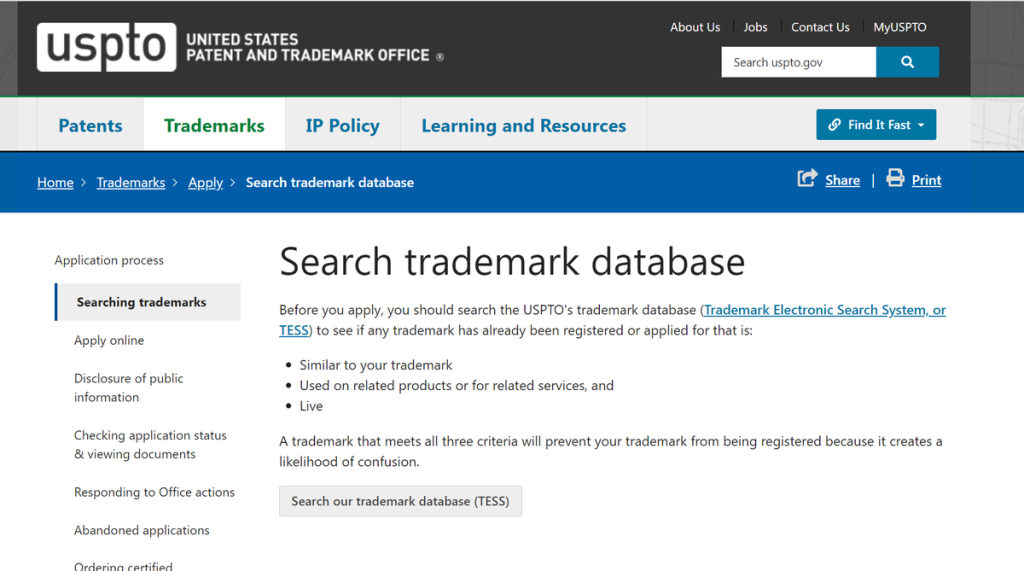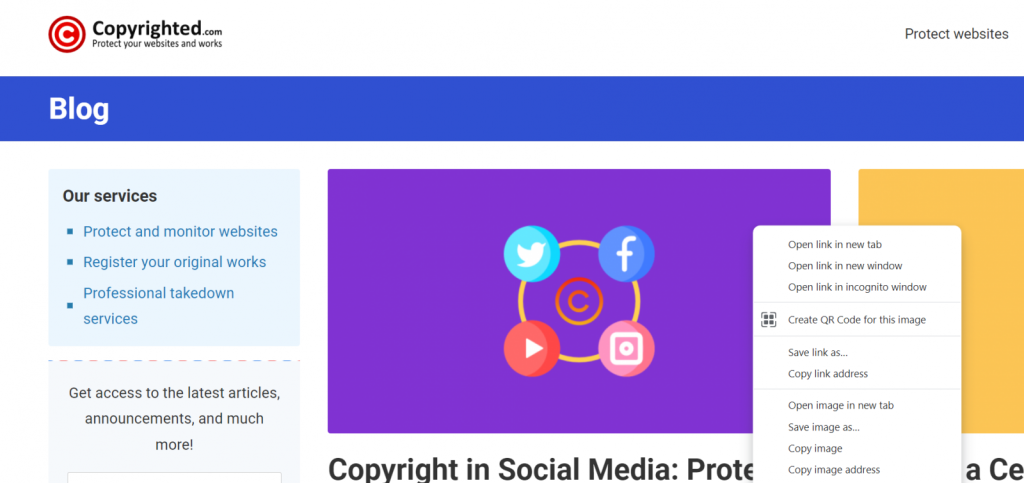Pirates have been around for a long time in one form or another. Today’s pirates don’t have names like “Captain Hook” or “Blackbeard.” It’s not The Pirates of the Caribbean anymore. The battleground has gone virtual, and so have the tactics.
Those who pose a threat to your original content now sail the seven seas of the internet. You’ve put blood, sweat, and brain power into building your training-based business. It’s time to give online pirates a broadside, return fire, and protect online course content!
In this article, we will go over the basics of intellectual property and how you can protect online courses from malicious profiteers and freeloaders.
Table of Contents
What is Intellectual Property?
Intellectual property refers to the intangible creativity of the human mind. These are essentially ideas that have been put to paper. More likely today, these ideas have been converted into 1s and 0s and stored on a personal computer or hosted servers online.
For businesses and freelancers, intellectual property must be protected at all costs. If your ideas can be stolen or duplicated, you are at risk of loss. You will be losing profit—someone else is benefiting from your hard work! It is crucial to implement security measures to safeguard your content.
One important security measure to consider is using a password manager to ensure strong and unique passwords for all your online accounts, including your course platforms. A password manager securely stores and generates complex passwords, reducing the risk of unauthorized access to your accounts and protecting your online course content from hackers with stolen passwords.
Additionally, you can enhance the protection of your online course content by incorporating an embeddable calendar to schedule and manage access to course materials, ensuring secure and controlled distribution.
Two types of intellectual property apply to anyone looking to create an online course business.
Trademarks
A trademark is likely the first thing consumers see when they interact with a business. For you, that includes things like your company name, logo, slogans, and symbols. It’s the “golden arches” or the “swoosh” as well as the brand name. This includes things like font and color as well.
Trademarks prevent customers from confusing one company with another.
Copyrights
Getting a copyright is a must for the property protection of any original work you create. It helps you protect online courses by giving you full control over how your training content is used and distributed.
A copyright protects you if you find your content on an unauthorized website or platform. It gives you a vehicle to order the content to be taken down or seek legal recourse in the form of compensation.
Why is it Important to Protect Online Courses?
Today we have plenty of regulations in place to protect online courses and other original content. Unfortunately, in the digital age, local laws and policies aren’t enough to secure your intellectual property.

The age of information has encouraged the sharing of ideas like nothing that has existed before. It has also made it easier than ever for people to gain free access to paid content.
MUSO’s Piracy by Industry report painted a dark picture for content creators of all types. It found that the United States led the way in media piracy sites worldwide with 5.6 billion visits. The publishing sector was the hardest hit, with an increase in piracy of 58.5% when compared with the previous year. Industries like film, tv, music, and software were all up 9.6% or more from 2021.
Such a ubiquitous uptick in online piracy means that your online courses are very much under threat. Make sure that you keep your online documents safe with the following security measures.
Security Measures to Protect Online Courses
Multibillion-dollar industries like Hollywood and software developers are struggling to combat online piracy. So, what chance do you stand to protect the online course content that you and your partners create?
1. Trademark your brand and logos
Whether you’re a fledgling company or still in the planning stages, you want to protect your intellectual property from the beginning. As soon as you have your brand name and logo, it’s time to apply for a trademark.
The trademarked property will be followed by ™ or ®. The former indicates a trademark is currently in the application phase, while the latter indicates the process is complete. How you set about this will depend on where your business is based.
For conducting business in the US, you will need to apply with the United States Patent and Trademark Office (USPTO). It’s best practice to follow the examples of big brands and apply for a separate trademark for each component. In this way, you can protect your brand equity regardless of the situation each element makes an appearance.

Using Apple as an example, this would protect the use of the logo, the brand name, and product names (like MacBook or iPhone) when used together or on their own.
2. Copyright all of your content
Once you’ve got your USPTO application on the way, it’s time to legally claim the rights for all of the content you create for your online course. You can copyright your website and content like images, charts, graphs, music, and other materials.
You can use the © symbol to indicate copyrights for all of your original content. However, this is not necessary to protect online course content ownership.
3. Make sure you cover outsourced content
You don’t want to leave anything up to interpretation with ownership rights. Protect online courses by securing copyrights for outsourced content that ends up in your presentations, videos, and other channels.
An easy way to accomplish this is to have specific wording in any contracts that transfer ownership rights to your business. Seek counsel from a trademark and copyright lawyer to be certain the contract is enforceable.
4. Sell personalized content
Creating online courses can be a great business model. Instead of having to repeat yourself in perpetuity, you can craft high-quality coursework that can be used ad infinitum. The convenience also makes it easy for scammers to pirate your hard work.
One of the best ways to add value to your authentic content is by providing personalized materials that are much more difficult to copy. These types of content include live Q&As, webinars, one-to-one video chats, class messaging, and quizzes.
5. Use watermarks

Remember when you finished that 20k run or a Tough Mudder race? You likely screenshotted that sample image of yourself crossing the finish line and reposted it to social media. It looks great, minus the massive transparent logo stretched across the image.
The photographer was a pain because they wanted you to purchase the unadulterated photo. You can follow this example by including watermarks on all of your images and video content.
Just be certain that you don’t distract from the content itself. A good tactic is to include your website in the watermark. This helps users of absconded content discover your website and drives conversions.
6. User two-factor authentication
The first step to preventing hacking of your subscriber accounts is to encourage your users to create strong passwords. But it’s 2FA (two-factor authentication) that makes a considerable difference in securing your online courses.
Two-factor authentication is used by email, software-as-a-service, and operating system providers. You can use third-party apps or your hosting platform to add two-factor authentication for all of your users.
Along with strong user authentication, you may also want to look into a hosting solution that offers secure remote access for live-training applications.
This helps safeguard against your content being ripped off by hackers with stolen passwords. 2FA also helps to deter “community” or “family” accounts, where multiple users share a single subscription. While people may still opt for this black hat method, many will be annoyed by the constant notifications and prompts to authenticate.
7. Don’t forget to use your face
Like Brendan Fraser’s character in The Whale, not all of us feel we are built to be in front of the camera. However, if you can overcome any misgivings, you will add undisputable ownership to your online course.
Besides the obvious video content, you can induce a “talking head” box in the lower corner of things like powerpoints presentations or when screen-sharing content during a live course. You can also include images of yourself in written content and web copy.
8. Timestamp everything
Whether you’re using WordPress, Shopify, or another web publishing platform, you should try to timestamp all created content like blog posts. If you don’t know how to do this, you may use a managed service that’ll do it automatically for you.
Publishing timestamps will add to the pile of evidence of ownership and better protect online course content.
9. Email a copy of all your content to yourself
There’s a simple way to protect content that many people don’t know about: email a copy of all created content to yourself. This tactic only works if you use a secure email hosting service. It may be best to go with a paid service like Google Workspace.
As long as you don’t open the email, you will have legal evidence of the exact date you created your course content. You can save all these emails in a separate folder or even create an email account solely to receive and store these content security emails.
10. Don’t directly link to video content
It’s convenient to provide URLs to course videos. Like everything, if it’s convenient for your users, it’s convenient for content thieves!
A quick workaround is to create an htaccess.txt file that will prevent direct URL access to your video content. If adding a few lines of code to your server is intimidating, then consider using a private video streaming service or a third-party gated streaming service such as Udemy.
These options may make viewing videos slightly less seamless but prevent freeloaders from gaining access to your course materials.
11. Stay unique
Being unique isn’t the only name of the game when it comes to getting trademarks or copyrights. As a course builder, you offer skills, a knowledge base, and real-world experience. These details make up who you are and differentiate your online course from others.
Language, coined phrases, ideologies, and other characteristics are the foundation of who you are. Remember to keep your personality when creating course content. No matter how dry a topic may be, you can leave your fingerprints all over it by speaking (or writing) with your voice.
Again, while not legally binding, injecting yourself into created materials will help let anyone know exactly where a piece of coursework originates.
12. Disable Right-Click and Copy

One of the reasons protecting course content is so difficult is the ease with which pirates can grab and save online assets. From any web browser, just about anyone can right-click and select “save as” from the dropdown menu.
Content like written copy and images can be highlighted, copied, and pasted into other applications. Yet another simple measure to protect online courses is to disable these functions. In site builders like WordPress, you can find plugins that protect images and text from being saved in this manner.
13. Track possible infringements with alerts
Watching out for online piracy is more than a full-time job. You have much more on your plate than stymieing would-be thieves and scammers. However, there are methods available that will help keep a watchful eye out. They can be so effective they would make Tolkien’s Sauron green with envy.
One free tool available to you is Google Alerts. You can use alerts to track mentions of any search terms related to your course, brand, and specialized subject matter. With the right set of keywords and phrases, notifications will direct you to any potential infringements of your intellectual property.
You can also use social media management tools to track mentions of your business and keywords. Another option is to conduct a reverse search of your content. There are plenty of options available that will help you locate duplicates of your images and even videos.
You can use apps like Grammarly or Copyscape as plagiarism checker tools to protect online course content. Even better, you can use third-party services like Copyrighted that will help you protect and monitor your websites. They also supply professional takedown services that will protect online courses with rapid resolution.
14. Get legal advice
The most obvious answer to protect online courses is to seek legal advice. Regardless of the scope of your project, you should involve specialized legal experts from the beginning of your business creation process.
This will ensure that you have a smooth trademark application process as well. Having legal counsel accessible will also keep you prepared for when action needs to be taken. In fact, having an intellectual property lawyer reach out to scammers and plagiarizers and make first contact often solves the problem without any further action necessary.
And, of course, when more is required, a legal team will guide you every step of the way.
Protect Your Online Courses Today
Every minute that goes by is another minute your online course materials are vulnerable. We’ve given you an armory of weapons to choose from in the fight against piracy. Pick a combination of what sounds useful and start reinforcing your defenses.
With action, legal advice, and the right tools, you will have potential scammers cowering in fear when and if you come knocking on their virtual doorstep!


